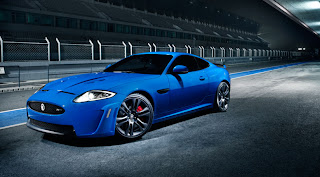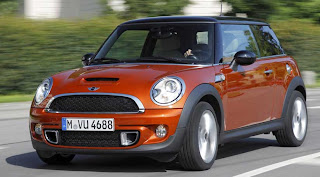
Volkswagen has released the first photos of the 2011 Golf Cabriolet, prior to its official launch at the 2011 Geneva motor show.
New in 2011? I could've sworn that they'd already released the Golf cabrio?
It's that sort of car, the Golf Cabrio. But we can assure you this is actually a new vehicle. There hasn't been a Golf soft-top since 2002, and that car was a Mk3 Golf in Mk4 clothing.
Where's the 'basket handle' rollover hoop?
Previous Golf Cabriolets have sported a prominent rollover bar, For the Mk6 edition, Volkswagen has installed a pop-up rollover protection system, as found on the Eos, New Beetle and (whisper it) Audi A3 cabriolets. The system deploys in milliseconds, and allows the 2011 Golf Cabriolet to dispense with one of its predecessors' visual hallmarks.
You'll also notice that the convertible roof hides nearly flush with the body in the latest Golf convertible. That soft-top is now electrically operated as standard, and can switch from fresh-air to fully enclosed in 9.5 seconds. You can even go topless at speeds up to 18mph.
Anything else I should know?
Head- and taillights derived from the Golf GTI, a more steeply inclined windscreen, a bootlid that drops into the bumper to allow access to the 250 litres of boot space, and a chrome strip around the perimeter of the cabin are the key exterior changes (after the decapitation).
That chrome edging in particular put us in mind of the current A3 soft-top. Inside, there's a 50:50 split-folding rear bench and the controls for the roof on the centre console - other than that it's the standard Golf interior.
The Golf Cabriolet will come with six engines at launch: four TSI petrol engines from 1.2 to 2.0 litres, and two TDI diesels. VW is most proud of the 104bhp 1.6 TDI, which should achieve 117g/km CO2 figures if you can stomach some distant diesel clatter.
Further information on pricing and availability for the UK is expected following the Golf Cabriolet's debut at the 2011 Geneva motor show.
Source from carmagazine
New in 2011? I could've sworn that they'd already released the Golf cabrio?
It's that sort of car, the Golf Cabrio. But we can assure you this is actually a new vehicle. There hasn't been a Golf soft-top since 2002, and that car was a Mk3 Golf in Mk4 clothing.
Where's the 'basket handle' rollover hoop?
Previous Golf Cabriolets have sported a prominent rollover bar, For the Mk6 edition, Volkswagen has installed a pop-up rollover protection system, as found on the Eos, New Beetle and (whisper it) Audi A3 cabriolets. The system deploys in milliseconds, and allows the 2011 Golf Cabriolet to dispense with one of its predecessors' visual hallmarks.
You'll also notice that the convertible roof hides nearly flush with the body in the latest Golf convertible. That soft-top is now electrically operated as standard, and can switch from fresh-air to fully enclosed in 9.5 seconds. You can even go topless at speeds up to 18mph.
Anything else I should know?
Head- and taillights derived from the Golf GTI, a more steeply inclined windscreen, a bootlid that drops into the bumper to allow access to the 250 litres of boot space, and a chrome strip around the perimeter of the cabin are the key exterior changes (after the decapitation).
That chrome edging in particular put us in mind of the current A3 soft-top. Inside, there's a 50:50 split-folding rear bench and the controls for the roof on the centre console - other than that it's the standard Golf interior.
The Golf Cabriolet will come with six engines at launch: four TSI petrol engines from 1.2 to 2.0 litres, and two TDI diesels. VW is most proud of the 104bhp 1.6 TDI, which should achieve 117g/km CO2 figures if you can stomach some distant diesel clatter.
Further information on pricing and availability for the UK is expected following the Golf Cabriolet's debut at the 2011 Geneva motor show.
Source from carmagazine
















































